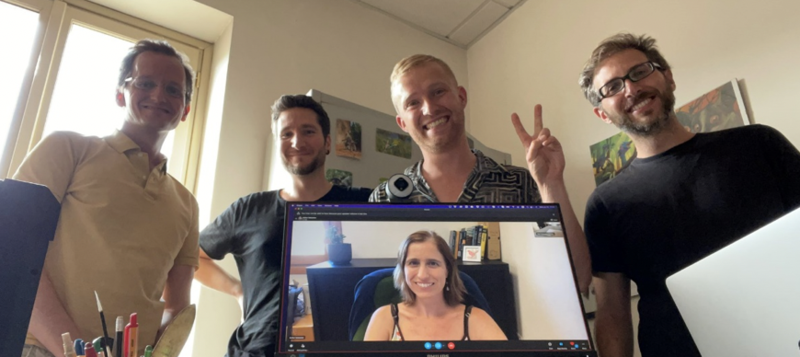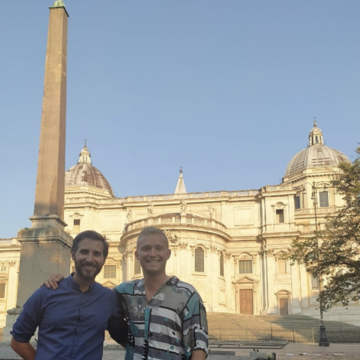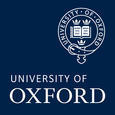From Rome with love… for life history theory!
(Scroll down for the Spanish version)
Collaborations are key to complement scientific work, learn about new views, and establish a network to reach complex goals. Due to limitations of capital especially (and the fact that there are only 24 hours in the day!), it is quite common for a research group to focus on the study of a certain group of species, ecosystem, or methods. Therefore, connections with other complementary groups can be useful to increase the quality, impact, and applicability of the obtained results. On the other hand, different researchers from different countries provide a more global vision of environmental problems, conservation, or specific conditions in each region. For these reasons, creating a solid network of collaborators is key in science to integrate multidisciplinary approaches and tackle questions in a robust manner.

Photo 1. The team at the end of one of the meeting Rome back in June. Our colleague Esther could not join us in person, but was present online / El equipo al finalizar la visita a Roma. Nuestra compañera Esther no pudo unirse en persona, pero estuvo presente de forma online.
At the SalGo Team, we are very proud to collaborate with researchers from all over the world. As an example, we are currently working in a project with researchers from the Sapienza University of Rome (Italy( and the University of Alicante (Spain). The project, entitled "Examining the links between life history strategies, population density, and conservation biology", funded by the Royal Society (IEC\R2202177), aims to test life history theory predictions at the macroecological level, as well as its ramifications for conservation, using hundreds of vertebrate populations worldwide distributed. The project is focused on identifying and quantifying key relationships between population density and life history strategies to examine how vertebrate species respond to environmental pressures. After many months of waiting for the pandemic, this past July we had the opportunity to have an in-person meeting in Rome, hosted by our collaborator, Dr. Luca Santini.
We enjoyed four days full of data, debates, and discussions on the relationships between vital strategies, body size, the relationship with population density and the influence that environmental conditions. Four days were we formalized hypotheses, analysed data, and falsified them with the available information. Four days were each of the members of the meeting contributed with their highly complementary skills. Dr. Esther Sebastián-González, with her extensive experience in ornithology illustrated processes with concrete examples of bird groups; Dr. Luca Santini, with his experience in the study of macroecology; Dr. Rob Salguero-Gómez, with his knowledge on life history theory; Dr. John Jackson, to develop the most appropriate approach to address the questions; and finally myself, applying the analyses in macroecology using phylogenies. An excellent team, if I may say myself, which not only spent four days working on the project, but also found some time to get to know a little bit of the wonders of the Eternal City. Besides working and making progress on the project, in the afternoons/evenings we enjoyed the Italian capital. Eating pasta all'amatriciana and alle vongole, walking through Trastevere, with an aperitivi in Pigneto or even enjoying an opera at the Termi di Caracalla.

Photo 2. John and Roberto walking around the streets of Rome after a long day of life history theoretising / John y Roberto explorando las calles de Roma trash un dia intense de life history theory.
Soon we will have another meeting of the whole team in Oxford, as well as the first results of the project. Nevertheless, in the meantime, we will enjoy the journey.
Written by Roberto Rodriguez
(Español)
Las colaboraciones en ciencia son muy importantes para complementar los trabajos científicos, conocer nuevos puntos de vista y establecer una red capaz de alcanzar objetivos más complejos. Debido a limitaciones de capital, especialidad (y el hecho de que solo hay 24h en cada dia!), es bastante común que un grupo de investigación se centre en el estudio de un determinado grupo de especies, ecosistema, o metodología. Por lo tanto, las conexiones con otros grupos complementarios pueden servir para incrementar la calidad, el impacto, y la aplicabilidad de los resultados obtenidos. Por otro lado, diferentes investigadores de distintos países aportan una visión más global sobre los problemas ambientales, la conservación, o las situaciones concretas en cada región. Por estas razones, crear una red de colaboradores sólida es clave en la ciencia para plantear cuestiones más robustas y buscar enfoques más multidisciplinares.
En el SalGo Team estamos muy orgullosos de colaborar con investigadores de todo el mundo. Un pequeño ejemplo de esto es el proyecto que llevamos con investigadores de la Universidad de la Sapienza de Roma y la Universidad de Alicante. El proyecto, titulado “Examining the links between life history strategies, population density, and conservation biology”, y financiado por el Royal Society (IEC\R2\202177), trata de poner a prueba las predicciones sobre teoría de la historia vital a nivel macroecológico, así como sus ramificaciones para la conservación, utilizando cientos de poblaciones de vertebrados de todo el mundo. El proyecto está enfocado en identificar y cuantificar relaciones claves entre la densidad de población y las estrategias de historia de vida para examinar cómo responden las especies de vertebrados a las presiones medioambientales. Después de muchos meses de espera por la pandemia, el pasado mes de julio tuvimos la oportunidad de hacer una reunión presencial en Roma (Italia) organizada por nuestro colaborador, el Dr. Luca Santini.
Fueron cuatro días repletos de datos, debates y discusiones sobre las relaciones entre las estrategias vitales, el tamaño corporal, la relación con la densidad poblacional y influencia que pueden tener las condiciones ambientales. Cuatro días donde formalizamos hipótesis, analizamos datos, y las falseamos con los datos disponibles. Cuatro días donde cada uno de los miembros de la reunión pudo aportar su visión. La Dra. Esther Sebastián-González con su amplia experiencia en la ornitología ilustró procesos con ejemplos concretos de grupos de aves, el Dr. Luca Santini aportó su experiencia en el estudio de la macroecología, el Dr. Rob Salguero-Gómez compartió sus conocimientos sobre la teoría de la historia de vida, el Dr. John Jackson fue clave para desarrollar la aproximación más apropiada para abordar las preguntas y finalmente yo mismo, aplicando los análisis en macroecología utilizando filogenias. Un equipo muy completo, que no sólo estuvo cuatro días trabajando en el proyecto, sino que también encontramos algún hueco para conocer un poco las maravillas de la ciudad eterna. Porque, aparte de trabajar y avanzar en el proyecto, por las tardes/noches pudimos disfrutar de la capital romana. Comiendo pasta all’amatriciana y alle vongole, paseando por el Trastevere, con un aperitivi en Pigneto o incluso disfrutando de una ópera en la Termi de Caracalla.
Próximamente tendremos otra reunión de todo el equipo en Oxford, así como los primeros resultados del proyecto. Pero mientras tanto habrá que disfrutar el camino.



